BASF eyes heavy gains with lightweight material technologies
BASF is targeting new growth with the advent of BS VI norms in India. It is also working on its new technology to increase its material supply business for battery manufacturing.
BASF, the leading chemical supplier to the auto industry, is targeting new growth with the advent of BS-VI norms in India as well as the OEM drive to reduce vehicle weight. This is in line with its plan to de-risk itself in disruptive tech times that could lead to a gradual decline in its fuel additive and catalyst business and replace it with material supply for battery manufacturing.
Change is constant and those who move with the times always stay ahead of the curve. That’s what BASF, the global chemical major, for whom automotive generates roughly 20 percent of its overall global revenue, that stood at 63 billion euros in 2018, is doing in today’s disruptive technology era. For BASF, 60 percent of the automotive industry’s share comes from its supply of plastics, exhaust catalysts, solvents, coatings and battery material to OEMs globally from its various manufacturing bases around the world.

BASF has partnered with automakers and Tier 1 suppliers to demonstrate that composites can compete both in interior applications and in structural exterior applications.
In India too, BASF’s automotive presence is in supplies of paints, catalysts and solvents to OEMs and top vendors, through its plants in Chennai (Tamil Nadu) and Dahej (Gujarat). For a company which filed around 900 patents globally last year, BASF set off on a new journey in India with its new state-of-the-art 'Creation Centre' at its Navi Mumbai R&D campus that brings customers and its own experts together to analyse their diverse needs and co-create new products and chemical solutions.
Andy Postlethwaite: "Over the past few years, all cars have become heavier due to meeting safety standards and other regulatory requirements. Material technology thus remains a key area and BASF will support OEMs in their lightweighting initiatives. The biggest lightweighting gains are from big structures as well as engine components."
With this collaborative approach, the company aims to solve various problems of the automotive industry right from the design and conceptualisation stage itself and offer more innovative materials, digital tools as well as consultancy to arrive at the most optimised solution. Importantly, it is also assisting OEMs in the crucial task of vehicle lightweighting, with its engineering plastic material used for vehicle interiors enabling considerable weight reduction compared to traditional materials, and in turn, reducing fuel consumption.
Readying for BS-VI and also electrification
With BS-VI norms just around the corner, the company says it is well prepared to begin increased supplies of exhaust catalysts, which will now be required in multiple numbers in a car, which calls for additional investment and capacity expansion at the supplier's end. Also, with the advent of electric mobility, BASF believes it has a good chance to diversify into the area of supplying battery material where it has been offering CAM (cathode active material) to battery manufacturers and OEMs for a substantial amount of time already. This material, trademarked as the HED CAM product family, includes a series of high-energy-density elements for Li-ion batteries offering a very high level of purity for automotive drivetrain requirements, claims the company.
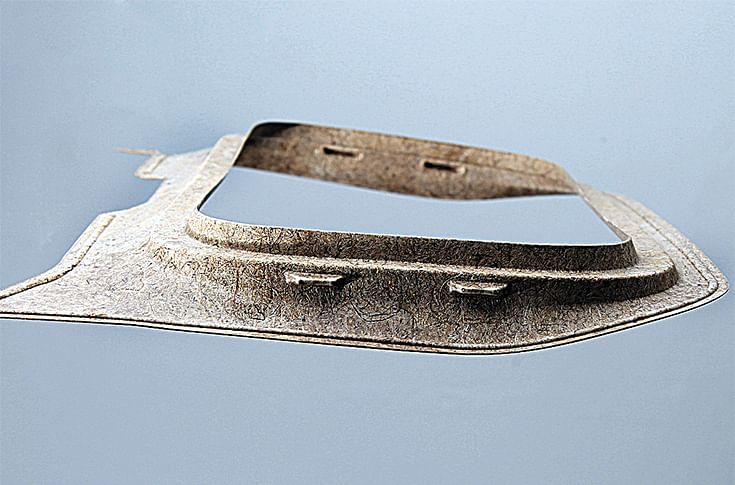
BASF’s Acrodur, a water-based, low-emission binder, strengthens natural fibres to create a sustainable, lightweight roof frame.
On the research front, while its expenses on R&D stood at 2,028 million euros with around 3,000 projects in 2018, its current focus lies on newer materials for automobile interior application, lightweighting and that for NVH improvement — all for application in modern-day and future electric cars.

BASF’s innovations for high-performance lithium-ion batteries will help double the real range of a mid-size car from 300 to 600km by 2025 and significantly reduce the charging time of electric vehicles. Chemist Dr Daniela Pfister examines a pouch cell containing cathode material. The lithium-ion battery of an electric car can contain a few hundreds of such cells.
According to Andy Postlethwaite, senior vice-president, Performance Materials – Asia Pacific and chairman and director on the board of BASF South East Asia, "We are looking at a whole new range of durability performance materials for surfaces. We think that shared mobility going forward will demand for different kind of interiors — more comfortable, easy to clean, very hardwearing — and so we are certainly working on materials appropriate for those new types of environments to provide the right type of surfaces as well as ensure that the cost of these products falls in the correct range for OEMs."
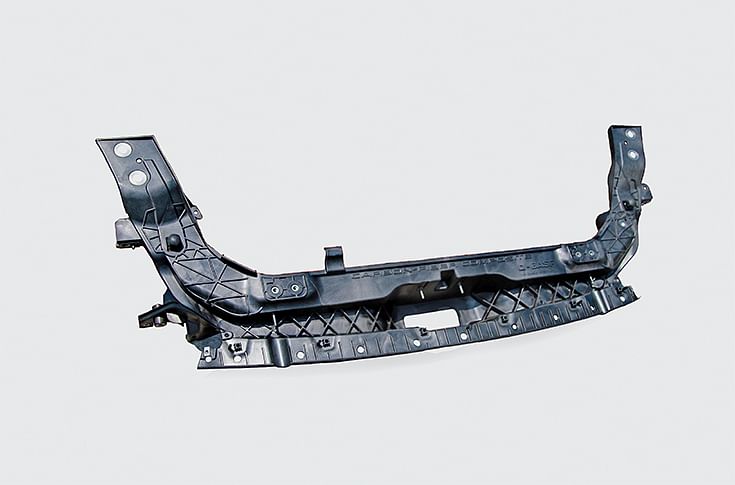
Magna and BASF partnered with Ford to create this structural part that is 24 percent lighter than the prior plastic-metal hybrid.
"Another area of research is that of comfort — NVH. In this regard, we have some unique elastomeric solutions that we have branded as 'Cellasto' which are used in the suspension system of a car. We see such materials becoming more and more important as we move towards quieter vehicles, especially electric vehicles and there we would be ready with our products."
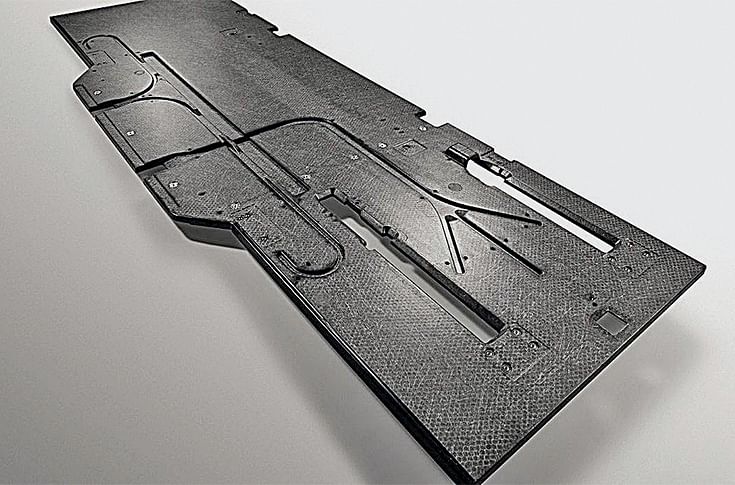
Elastoflex W flexible PU foams' lightweight, resilient and good air permeability properties makes it excellent cushioning material.
Talking about the company's lightweighting initiatives, he said, "We continue to work on lightweight topics as well. It is a topic anyway for an IC-engined, hybrid or a full EV. OEMs are always pushing towards lightweighting and as over the past few years, all cars have sort of become heavier due to meeting safety standards and other regulatory requirements, material technology thus remains a key area and BASF will support OEMs in their initiatives."

With new Elastolit R 8819 Lightweight material, usual component thickness of 3.0mm can be reduced to less than 2.5mm
"The biggest lightweighting gains are from big structures as well as engine components. For instance, for a global OEM, we have developed plastic engine mounts which are significantly lighter as opposed to steel blocks and also offer an opportunity to save costs due to the increased capability of part integration. OEMs today are looking at every single kilogram of weight reduction and thus, we are working on many different parts and lightweighting areas within a vehicle.
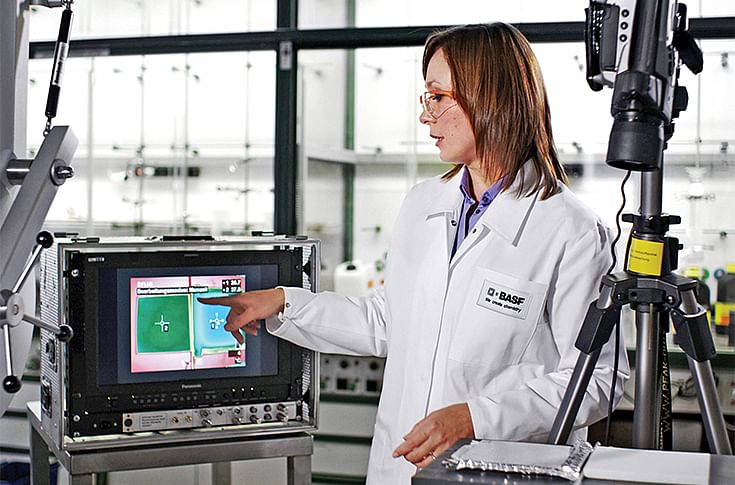
BASF's proprietary prediction technology ULTRASIM, which offers 95 percent accuracy in terms of expected performance of a material helps automakers design and develop lightweight performance parts by eliminating 'do overs'
"Paper honeycomb (Elastoskin) is gaining good traction and is being used for flat surfaces for instance in the construction of the boot floor panel in a car, which is made from cardboard until now and is very heavy. Paper honeycomb is two layers of fibre-glass with a paper structure in between is very strong and extremely lightweight and weighs up to 50 percent lesser than conventional materials," he added.
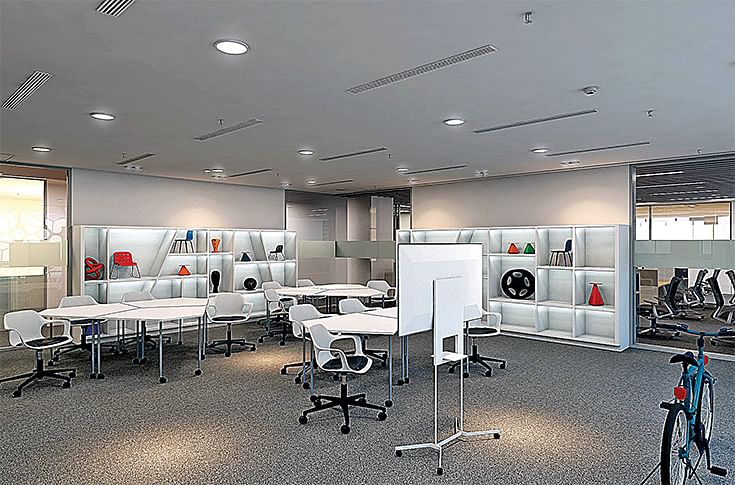
In May 2019, BASF India opened its Creation Centre in Navi Mumbai. Here, customers can explore materials, use interactive digital tools, and participate in ideation and material consultancy workshops. Together with BASF experts, they can collaborate from design development to advanced simulations through computer-aided engineering through to advanced prototyping — all in one place
On being queried as to how he views additive manufacturing as a driver of the auto industry, Postlethwaite remarked, "While we do see 3D printing being used for quick prototyping, but like injection moulding or other manufacturing technologies, there has to be a sweet spot for a technology to be a cost-effective solution depending upon its application. We might see 3D printing scaling up to full-scale production in the future, but that depends on making it viable from a cost perspective."
(This article was first published in the October 1, 2019 issue of Autocar Professional)
RELATED ARTICLES
From Rs 431 Crore Loss to Recovery: Inside TIL’s Comeback
New ownership charts ambitious turnaround for TIL, India's oldest crane manufacturer.
Why Toyota Is Building Its Carbon-Neutral Future Around India
A look inside the engineering logic driving the world’s largest carmaker as it pursues multiple routes to decarbonisatio...
ZF’s Construction Equipment Strategy Reveals How India Has Moved Beyond the Auto Market
ZF's leadership sees the construction equipment sector as an anomaly, a segment that, despite its current sluggishness, ...






 09 Nov 2019
09 Nov 2019
 10350 Views
10350 Views






 Shahkar Abidi
Shahkar Abidi


 Ketan Thakkar
Ketan Thakkar


